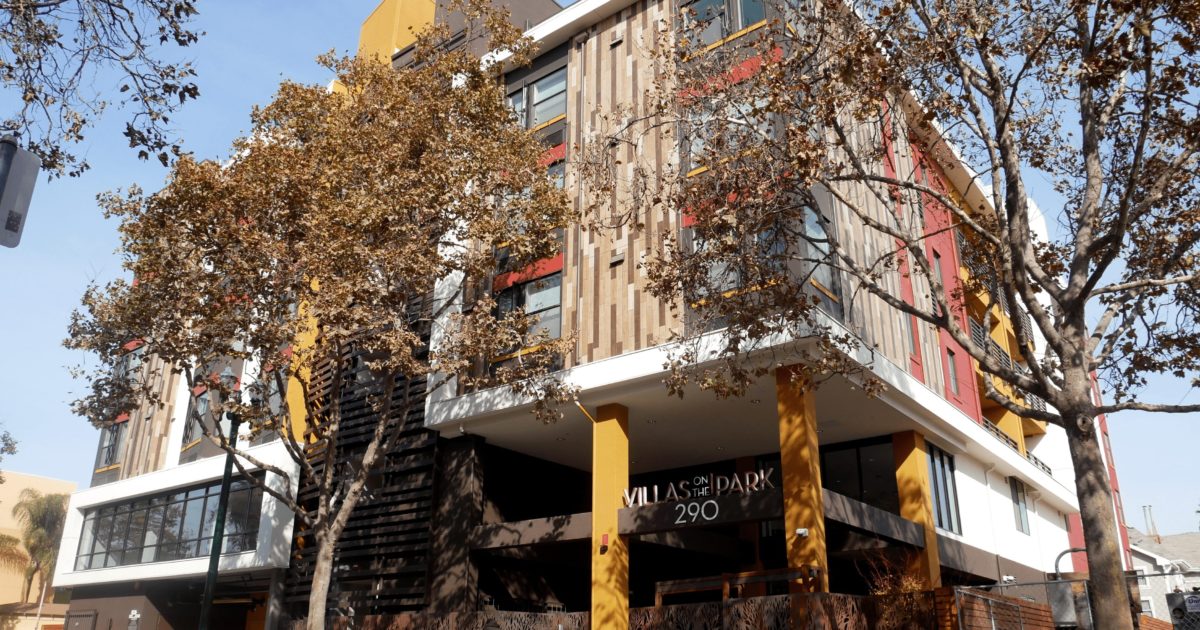Federal funds for permanent supportive housing programs are expected to be substantially parred down, putting hundreds of Santa Clara County residents at risk of becoming homeless.
The U.S. Department of Housing and Urban Development (HUD) plans to cap the amount of Continuum of Care grants that can be used for permanent housing to 30% for the 2026 round of funding, according to internal documents obtained by Politico. Funds that traditionally are used to help vulnerable populations gain housing stability will be siphoned into temporary housing programs, with work or other requirements attached to the programs. These grants are Santa Clara County’s largest source of federal funding, with millions of dollars being used each year to address homelessness.
County officials said this could leave at least 1,000 households on the brink of homelessness.
“We will do everything we can to try to mitigate that,” Kathryn Kaminski, director of the Santa Clara County Office of Supportive Housing, told San José Spotlight. “But certainly this and other federal policy decisions — such as cuts to Medicaid and cuts to safety net programs such as food and nutrition support — all of those are going to have major impacts in our community.”
The county received nearly $48 million in Continuum of Care grants in January to provide rental subsidies and supportive services to vulnerable populations. Some of these grants provided funding for up to two years, while others will last another year. But funding for a handful of new programs, nearly $6 million, has yet to be received — and future grants are on the chopping block.
Approximately 1,600 people are served by the county’s permanent supportive housing programs through the Continuum of Care grants. An additional 250 people are served in the county’s rapid rehousing programs, which provides time-limited rental subsidies to help stabilize households.
Kaminski said it’s unclear if the rapid rehousing programs are at risk of losing funding. Her office is studying the potential impacts of what the loss of funds could mean for the dozens of permanent supportive housing and rapid rehousing programs funded through the grants.
“Many folks in these programs have chronic disabling conditions,” Kaminski said. “These are folks who may need a longer term subsidy. And we have been able to successfully support folks with the assistance they need to be stably housed.”
Santa Clara County has been investing in permanent supportive housing as a key strategy to reduce homelessness. Now, that future is uncertain as more than 10,700 people are homeless in the county — a record number. More people are falling into homelessness for the first time, and chronic homelessness — people who have spent more than a year without a home — has also increased 114% over the past decade.
San Jose nonprofit Razing the Bar is still waiting for $1.9 million from HUD to support its own permanent housing program, which would provide housing and supportive services for up to 30 young adults battling chronic homelessness, including foster youth.
“It’s going to be unfortunate if they actually remove these slots knowing we don’t actually have a lot of other options for folks that are chronically homeless and battling mental health challenges,” Dontae Lartigue, co-founder of Razing the Bar, told San José Spotlight. “So if we’re not getting them stable and providing long-term housing, some of these things are just going to continue.” Sandy Perry, board vice president of South Bay Community Land Trust, said imposing work and sobriety requirements could create additional barriers for people trying to get out of homelessness.
Sandy Perry, board vice president of South Bay Community Land Trust, said imposing work and sobriety requirements could create additional barriers for people trying to get out of homelessness.
In July, President Donald Trump signed an executive order calling to prioritize funding for cities and states that prohibit homeless encampments and drug use in public, and directing more assistance to local governments for outpatient treatment programs.
Trump’s executive order called for an end to the “housing first” model, which prioritizes funding for affordable housing based on the premise housing creates stability which enables individuals to address other problems.
“If we want to end homelessness, you have to look back at what are the causes,” Perry told San José Spotlight. “Go back to the 1980s when they cut rental subsidies by 80% and homelessness began to be a serious problem, and instead of restoring those cuts that were done years ago, which is what the solution is an increase, they’re further cutting.”
Contact Joyce Chu at [email protected] or @joyce_speaks on X.

